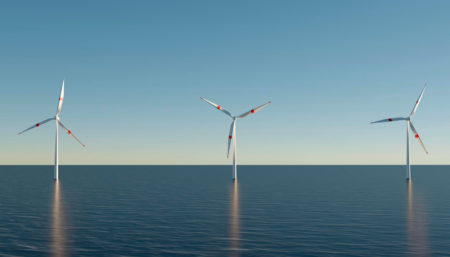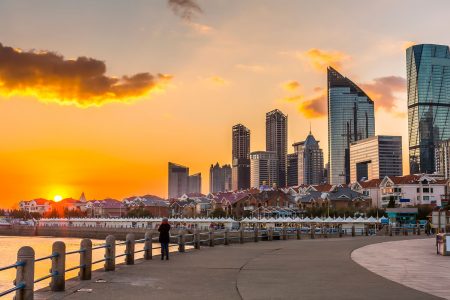
News
WIND EUROPE
The ROMEO Project, in which Zabala Innovation is a partner, will showcase its innovative solutions at Wind Europe 2022
The European initiative celebrates the 6th of April its final event after five years
The European Commission approved the Green Deal, which will include aid to reduce CO2 emissions by up to 50% by 2030, and fully by 2050

The European Commission yesterday adopted the European Green Deal, a roadmap to reduce net CO2 emissions to zero by 2050. This strategy aims to lay the foundations for a cleaner, healthier, greener and more sustainable Europe that will help radically transform the continent’s economic model. The 28 governments of the Union will ratify both the 2050 target and the financing plans to mobilise up to 100,000 million euros between public and private funds.
President Ursula von der Leyen said: “The European Green Deal is our new growth strategy, growth that delivers more than it consumes. It shows how to transform our way of living and working, of producing and consuming, so that we live healthier and our businesses are innovative. We can all participate in the transition and we can all take advantage of the opportunities it offers. If we are the first to take this step, and if we take it quickly, we will contribute to making our economy a world leader. We will do our utmost to achieve this, for the sake of the planet and the life it supports, for Europe’s natural heritage, for biodiversity, for our forests and for our seas. If we show the rest of the world how to be sustainable and competitive, we can convince other countries to join us”.
The European Green Deal incorporates a roadmap with a series of actions to boost the efficient use of resources by moving to a clean and circulating economy and halting climate change, reversing the loss of biodiversity and reducing pollution. It describes the investments needed and the financing instruments available and explains how to ensure a just and inclusive transition. This strategy will cover all sectors of the economy, especially transport, energy, agriculture, buildings and industries such as steel, cement, ICT, textiles and chemicals.
In order to transform into legislation, the political ambition to be the first climate-neutral continent by 2050, the Commission will present within 100 days the first European Climate Law. The Commission will also present the Biodiversity Strategy for 2030, the new Industrial Strategy, the Circular Economy Action Plan, the Farm to Table Sustainable Food Strategy and proposals for a pollution-free Europe. Work to tighten Europe’s emission targets for 2030 will begin immediately and a realistic path towards the 2050 target will be set.
Achieving the objectives of the European Green Deal will require significant investment. Meeting the current climate and energy targets by 2030 is estimated to require EUR 260 billion of additional annual investment, representing about 1.5% of GDP in 2018. This will require mobilising the public and private sectors. The Commission will present in early 2020 the Investment Plan for a Sustainable Europe to help meet investment needs. At least 25% of the EU’s long-term budget should be devoted to climate action, and the European Investment Bank, the European Climate Bank, will provide additional support. For the private sector to contribute to financing the green transition, the Commission will present the Green Finance Strategy in 2020.
The plan also includes the creation of a Just Transition Mechanism to assist countries to help carry out reconversion. This instrument would have a specific fund of EUR 5 billion, plus EUR 5 billion from the Structural Funds and a further EUR 1.5 billion for guarantees.
According to the Commission, the mobilisation potential would amount to EUR 35 billion. But Brussels aspires to reach even 100 billion euros thanks to the contribution of State resources and the contribution of the European Investment Bank.
In March 2020, the Commission will launch the Climate Deal to give citizens a voice and a role in designing new actions, disseminating information, starting grassroots initiatives and presenting solutions that others can replicate.
Another big leg of the new strategy will include protecting biodiversity, food security and fighting deforestation because “we need to change the way we produce, consume and trade”. In this area, von der Leyen is committed to presenting a new strategy on biodiversity, another to promote sustainable food with new targets for pesticide reduction (50% by 2030) and measures to boost rural areas, a third to combat environmental degradation and pollution, a new industrial strategy for the month of March, a new action plan to boost the sustainable use of resources through the circular economy and more concrete measures such as the review of construction products, the adoption of sustainable criteria for batteries placed on the EU market and the renovation of buildings as well as new action plans against air pollution, industrial pollution from large installations or waste management.
Climate change and environmental degradation represent an existential threat to Europe and the world. To meet this challenge, Europe needs a new growth strategy that transforms the Union into a modern, resource-efficient and competitive economy, where there are no net greenhouse gas emissions by 2050, where economic growth is not dependent on the use of resources and where no citizen or region is neglected.
The European Union already has a strong track record of reducing its greenhouse gas emissions while maintaining economic growth. Between 1990 and 2018, emissions fell by 23%, while the Union’s GDP grew by 61% over the same period. However, much remains to be done.
The Communication on the Green Deal sets the course for action in the coming months and years. The Commission’s work will be guided by public demands for action and unquestionable scientific data, thoroughly verified by the Intergovernmental Panel on Climate Change (IPCC), the Intergovernmental Science-Policy Platform on Biodiversity and Ecosystem Services (IPBES), the Global Resources Outlook and the European Environment Agency’s 2019 status and outlook reports.
Photograph by Arno Mikkor.
News
WIND EUROPE
The European initiative celebrates the 6th of April its final event after five years

Opinion
CITIES

Juan Cristóbal García
Senior Innovation Strategy Consultant

Publication
LIFE
We present the LIFE Programme's WHITE PAPER, especially useful if you are thinking of submitting your proposal to the 2022 call for proposals
We can help you with cascading funding, an EC mechanism that distributes public funding to help SMEs develop digital innovation.
We are experts in European funding programmes, which provide the opportunity to finance the development and market access of your company's innovative projects.
The expertise gained working with different EU programmes over the past decades has made Zabala Innovation the best partner to manage your European project.
This website uses cookies so that we can provide you with the best user experience possible. Cookie information is stored in your browser and performs functions such as recognising you when you return to our website and helping our team to understand which sections of the website you find most interesting and useful.
Strictly Necessary Cookie should be enabled at all times so that we can save your preferences for cookie settings.
This website uses Google Analytics to collect anonymous information such as the number of visitors to the site, and the most popular pages.
Keeping this cookie enabled helps us to improve our website.
Please enable Strictly Necessary Cookies first so that we can save your preferences!
This website uses the following additional cookies:
(List the cookies that you are using on the website here.)
Please enable Strictly Necessary Cookies first so that we can save your preferences!